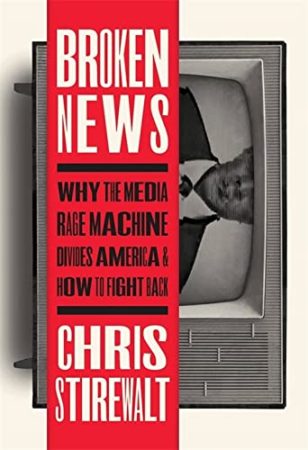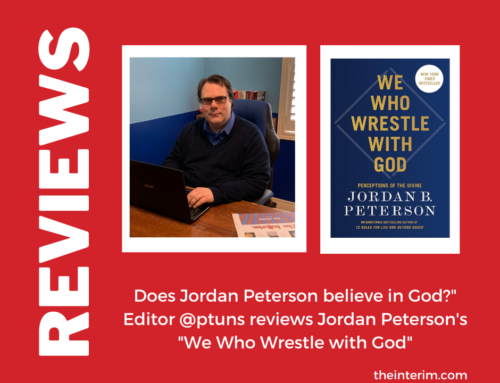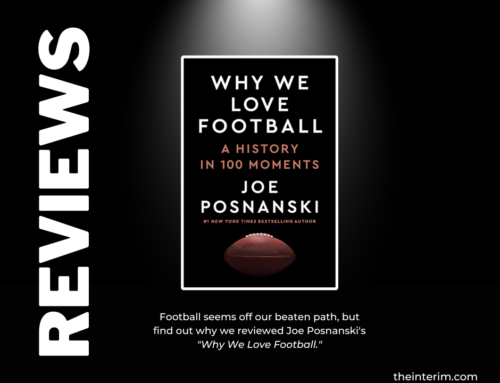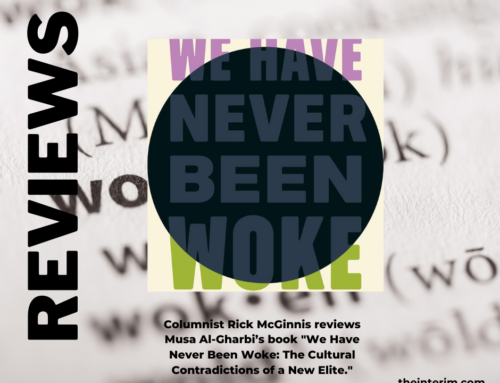Broken News: Why the Media Rage Machine Divides America & How to Fight Back
Chris Stirewalt (Center Street, $37, 246 pages)
 Chris Stirewalt, a former political editor at Fox News who lost his job for his role in prematurely (but correctly) calling Arizona for Joe Biden in 2020, is the author of a new, indispensable look at why mainstream journalism is broken. In Broken News, he describes that what is fundamentally wrong with the media is what it supplies — and its consumers demand — namely manufactured controversies. By this he does not mean genuine debate over important issues, but a journalism that focuses more on heat than light. So, in Stirewalt’s description, the media does not cover the ins-and-outs of issues, but rather: “What did Trump say? What did Nancy Pelosi say about what Trump said? What did Kevin McCarthy say about what Pelosi said about what Trump said? What did Sean Hannity say about what Rachel Maddow said about what McCarthy said about what Pelosi said about what Trump said?” How viewers consume journalism – passively through video and television – rewards outrage rather than information. The move toward watching the news or digesting in tweet-sized tidbits has replaced reading the news, which both requires and fosters reflective thought on the events of the day.
Chris Stirewalt, a former political editor at Fox News who lost his job for his role in prematurely (but correctly) calling Arizona for Joe Biden in 2020, is the author of a new, indispensable look at why mainstream journalism is broken. In Broken News, he describes that what is fundamentally wrong with the media is what it supplies — and its consumers demand — namely manufactured controversies. By this he does not mean genuine debate over important issues, but a journalism that focuses more on heat than light. So, in Stirewalt’s description, the media does not cover the ins-and-outs of issues, but rather: “What did Trump say? What did Nancy Pelosi say about what Trump said? What did Kevin McCarthy say about what Pelosi said about what Trump said? What did Sean Hannity say about what Rachel Maddow said about what McCarthy said about what Pelosi said about what Trump said?” How viewers consume journalism – passively through video and television – rewards outrage rather than information. The move toward watching the news or digesting in tweet-sized tidbits has replaced reading the news, which both requires and fosters reflective thought on the events of the day.
The growing illiteracy, including cultural illiteracy, contributes to consumers inability to understand issues at anything more than a superficial level, and the news media panders to the lowest common denominator. None of this is new; Stirewalt reports that by 1983, the number of Americans who “got their news from television alone pulled ahead of all newspaper use.” The problem is exacerbated by instantaneous communication and the current feedback loop of social media. Stirewalt notes that supposed villains on both sides of the political aisle generate “hate clicks” that “generate money for the outlets” peddling outrage, while contributing to the celebrity of fundamentally unserious politicians. Those celebrity politicians then continue to feed the social media beast by providing content that is simultaneously exciting for their supporters and outrageous to their opponents. Pulling emotional strings rather than engaging ideas and provoking thought is “more emotionally compelling,” and thoughtful and nuanced reporting cannot compete. But this reduces politics to sports, a source of entertainment and identity, neither of which positively contributes to the polity or its citizens. Stirewalt offers suggestions on how to push back against these trends, but as he describes them, the forces of broken news are so strong they are unlikely to be reined in.




